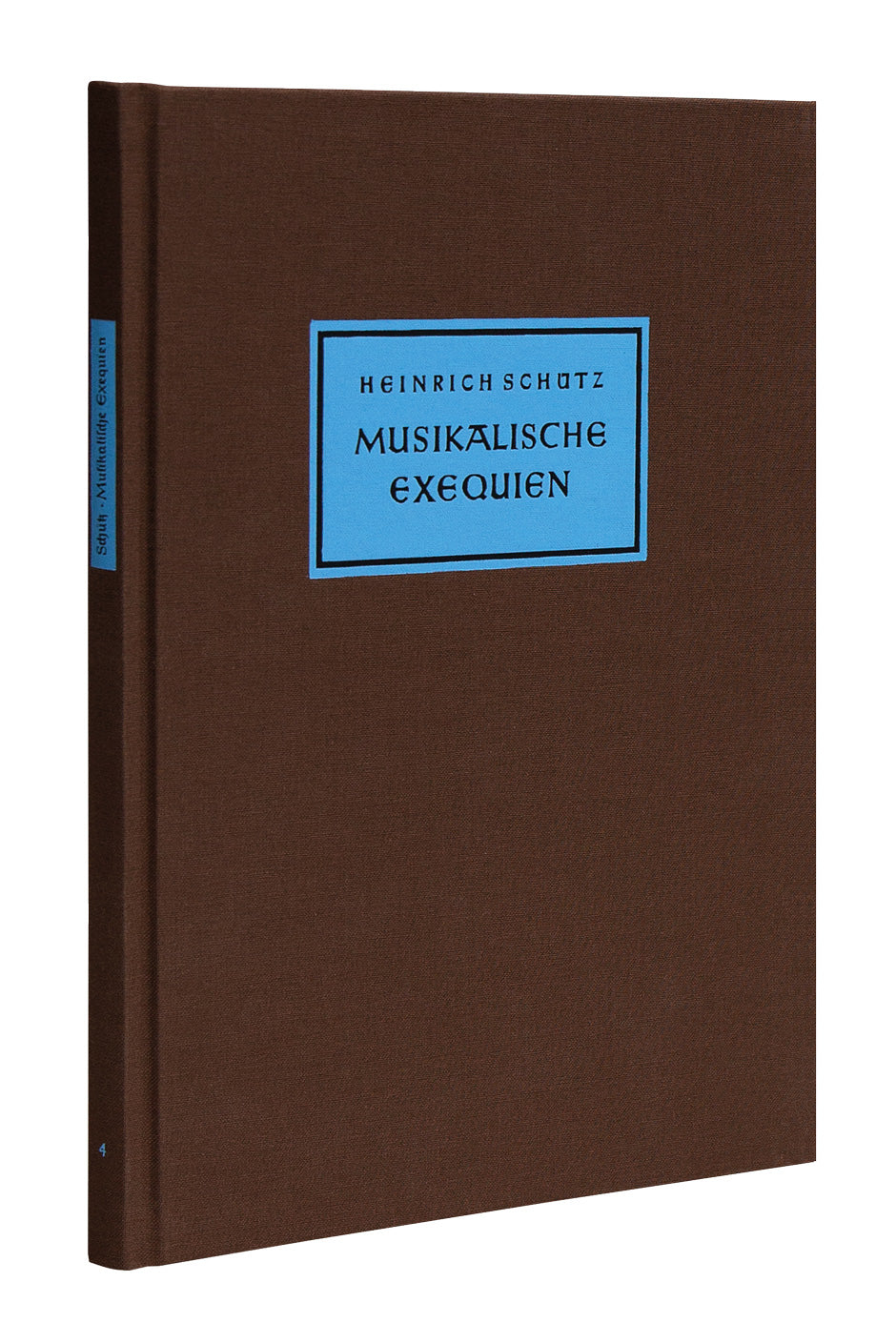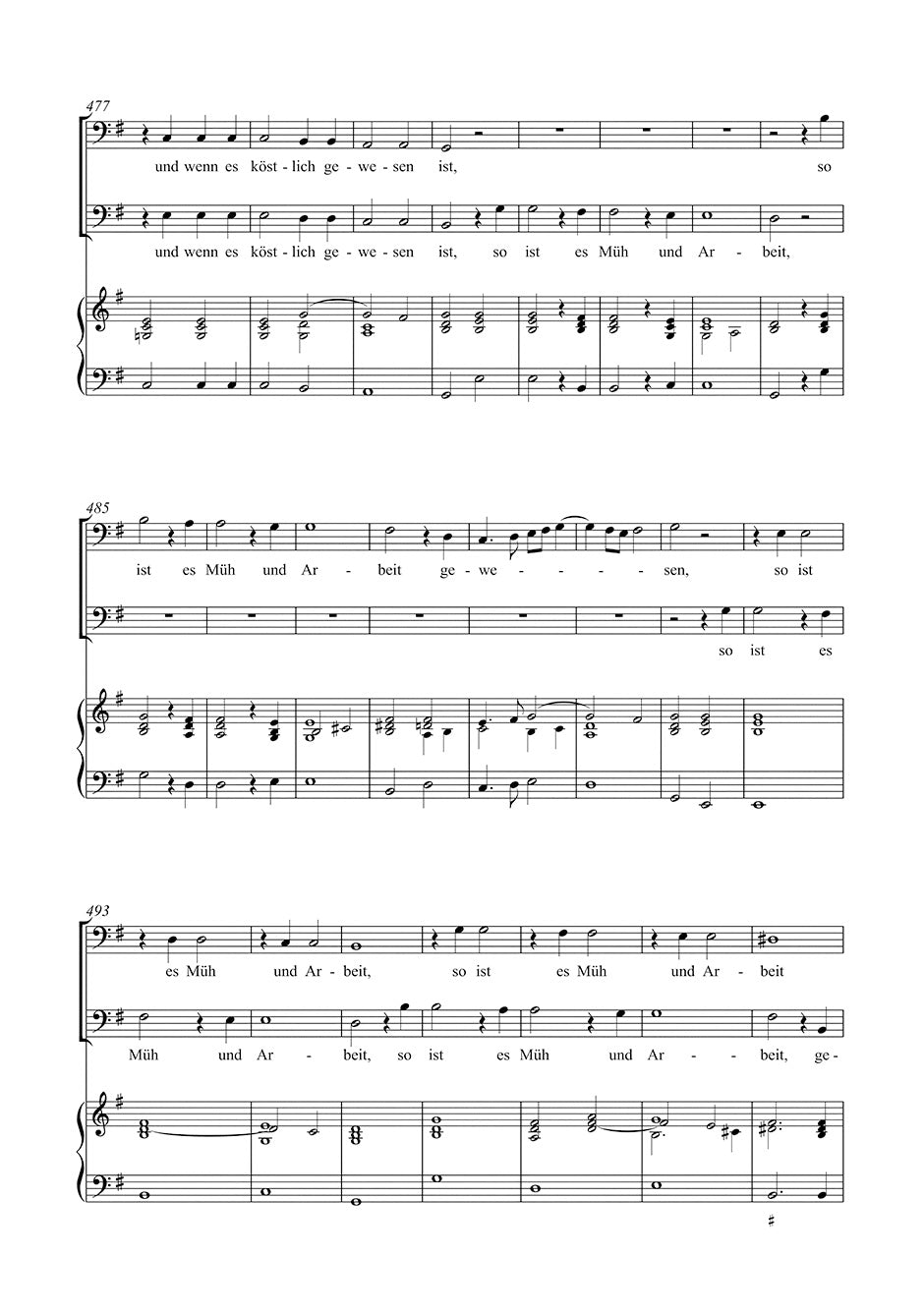Schütz: Musikalische Exequien
New Schütz Edition 4
Expected to ship in about a week.
- Composer: Heinrich Schütz (1585-1672)
- Format: Full Score – Hardcover
- Instrumentation: Basso continuo, SATB Choir
- Work: Musikalische Exequien (German Requiem), SWV 279-281, Op. 7
- Binding: Hardcover
- Work Language: German
- ISMN:
- Size: 7.7 x 10.8 inches
- Pages: 80
- Urtext / Critical Edition
Description
Violence, hunger and epidemic diseases made death omnipresent at the time of the Thirty Years' War. for every Christian, especially in times of crisis, preparing for their own earthly end was an integral part of life. An expression of this forgotten art of "dying well" are the "Musikalische Exequien" SWV 279-281, which Heinrich Schütz composed at the beginning of 1636 for the funeral celebrations of Heinrich Posthumus Reuß, Lord of Gera. They are among the most fascinating funeral music in European music history and at the same time mark an absolute high point in Heinrich Schütz's oeuvre. The "Exequien" are a unique artistic-religious exploration of the questions of earthly suffering and the promise of eternal life.
The revised new edition replaces volume 4 of the New Schütz Edition (BA00250) edited by Friedrich Schöneich in 1961. for the first time, the editor Beate Agnes Schmidt compares the only, albeit incomplete, surviving first print from the Waldenburg choir archive with contemporary copies and the Spitta edition. This new edition thus offers a substantial reconstruction of the original score. The preface discusses important questions about the genesis and special performance situation of the "Exequien". Aspects of Schütz's authorship are presented in a new light on the basis of newly evaluated sources.
The edition is supplemented by an extensive illustrated appendix, which offers facsimiles of the partbooks and original text sources as well as sketches, coffin inscriptions and other memorabilia. in addition, the new edition contains a historical-critical text edition of Schütz's text contributions and detailed descriptions and evaluations of the sources in the Critical Report.
Publishers use a lot of words to describe what they sell, and we know it can be confusing. We've tried to be as clear as possible to make sure you get exactly what you are looking for. Below are descriptions of the terms that we use to describe the various formats that music often comes in.
Choral Score
A score for vocalists that only contains the vocal lines. The instrumental parts are not there for reference. Generally, cheaper than a vocal score and requires multiple copies for purchase.
Facsimile
Reproductions of the original hand-written scores from the composer.
Full Score
For ensemble music, this indicates that the edition contains all parts on a single system (there are not separate parts for each player). In larger ensembles, this is for the conductor.
Hardcover
Hardbound. Generally either linen-covered or half-leather.
Orchestral Parts
Similar to a wind set, this is a collection of parts. In the case of strings, the numbers listed are the number of copies included, though generally these are available individually (often with minimum quantities required).
Paperback
When publishers offer multiple bindings (e.g. hardcover) or study scores, this is the "standard" version. If you're planning to play the music, this is probably what you want.
Performance / Playing Score
A score of the music containing all parts on one system, intended for players to share. There are not separate parts for each player.
Set of Parts
For ensemble music, this indicates that there are separate individual parts for each player.
Solo Part with Piano Reduction
For solo pieces with orchestra, this is a version that contains a piano reduction of the orchestra parts. For piano pieces, two copies are typically needed for performance.
Study Score
A small (think choral size) copy of the complete score meant for studying, and not playing. They make great add-ons when learning concertos and small chamber works.
Vocal Score
A score prepared for vocalists that includes the piano/organ part or a reduction of the instrumental parts.
Wind Set
For orchestral music, this is a collection of wind and percussion parts. The specific quantities of each instrument are notated.
With Audio
In addition to the printed music, the edition contains recordings of the pieces. This may be an included CD, or access to files on the internet.
With / Without Fingering (Markings)
Some publishers prepare two copies - a pure Urtext edition that includes no fingering (or bowing) suggestions and a lightly edited version that includes a minimal number of editorial markings.





